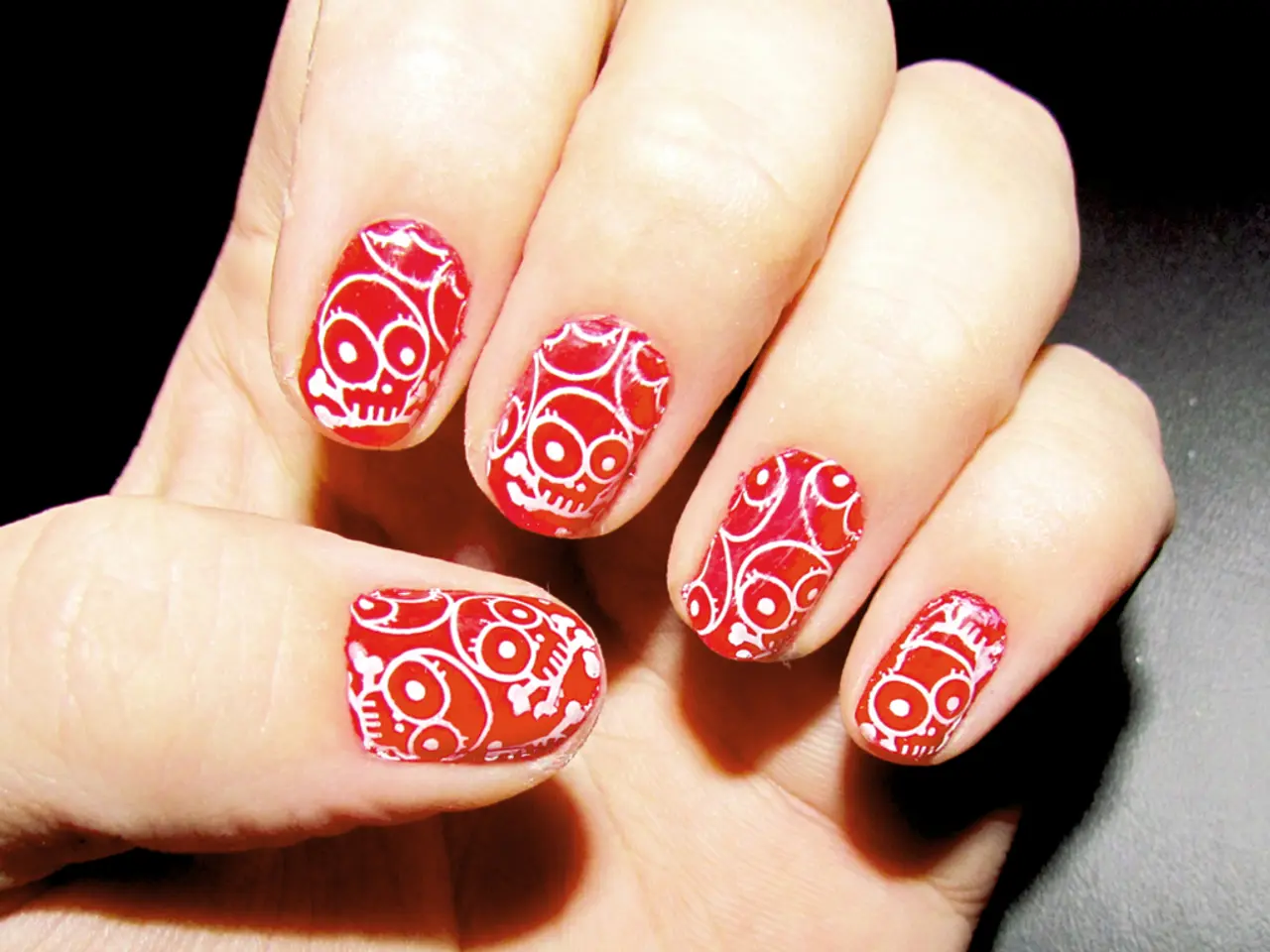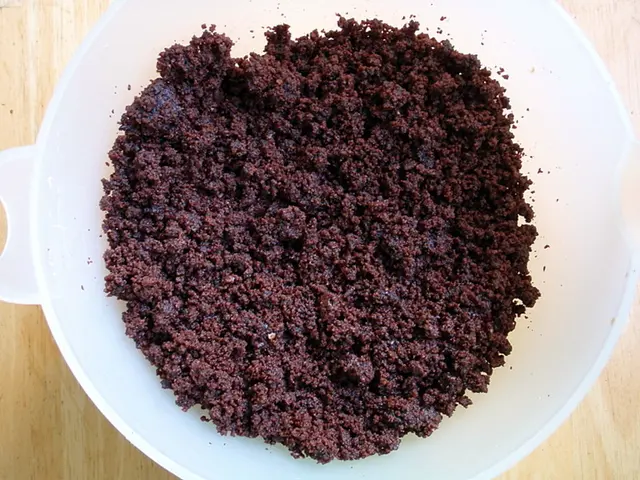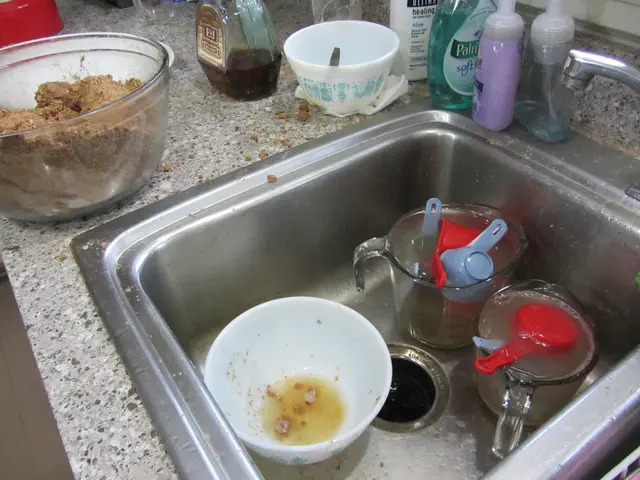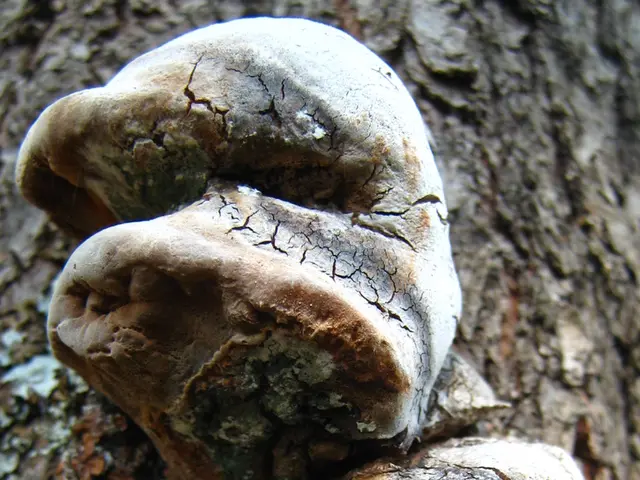Melanoma under the nails: Signs, potential causes, and remedies
Subungual Melanoma: The Hidden Skin Cancer Beneath Your Nails
Ever ignored that weird-looking streak under your fingernail or toenail? Well, it might just be subungual melanoma, a rare yet serious type of skin cancer lurking beneath your nails. Don't freak out just yet! We're here to uncover the symptoms, treatment options, and general outlook for this often overlooked cancer.
Let's dive into it:
What is subungual melanoma?
Skin cancer, you say? But under the nails? Yep, you read that right. Subungual melanoma is a type of cancer that forms in the melanocytes, the cells responsible for pigmentation, in the nail bed, the region beneath the nail. This type of melanoma might seem alien, but it's essential to understand its characteristics and watch out for any unusual changes.
Symptoms
Subungual melanoma can present itself as a brown or black streak under the nail, often mistaken for a bruise. Other key symptoms include:
- Streaks on the nails that increase in size
- A persistent bruise under the nail that refuses to heal or move up as the nail grows
- Fingernails or toenails separating from the nail bed
- Darkening skin next to the nail
- Nails with bleeding or a developing nodule
- Thinning, cracking, or distortion of the nail plate
One significant sign to look out for is Hutchinson's sign - nail pigment that extends onto the skin surrounding the nail.
Risk Factors
Having certain risk factors does not automatically mean you'll develop subungual melanoma, but they increase your chances of having the condition. The most common risk factors include:
- Prolonged exposure to the sun and UV light
- Having many moles or abnormal moles
- Having fair skin and light hair
- A family history of melanoma or other skin cancers
- Having other conditions that compromise your immune system, like HIV
- Being older
- Being male
Interestingly, subungual melanomas are more common among African, Asian, and Hispanic populations, accounting for 75%, 25%, and 10% of melanomas in African, Chinese, and Japanese populations, respectively.
Diagnosis
If you suspect subungual melanoma, it's crucial to consult with a healthcare professional. A doctor will conduct a physical exam, discuss your symptoms and medical history, and likely order a biopsy if they suspect melanoma. If diagnosed, additional tests may be performed to determine the stage of the melanoma.
Comparison with Other Conditions
Subungual hematomas, a result of burst blood vessels beneath the nail, can resemble subungual melanoma, since they also cause dark marks under the nail. However, subungual hematomas are not cancerous and should not be mistaken for melanoma.
Treatment
Treatment for subungual melanoma depends on the severity and stage of the disease. Surgery, either to remove the entire nail or a portion of the affected digit, is the primary treatment method. In some cases, further therapies like radiation and chemotherapy may be recommended to prevent the spread of cancer.
Outlook
The outlook for subungual melanoma varies depending on its stage at the time of diagnosis and a person's response to treatment. Early detection significantly increases treatment success. Consult your healthcare provider if you notice any unusual changes in your nails to ensure peace of mind!
- Subungual melanoma can progress into a degenerative state, causing serious complications if left untreated.
- Recent research suggests that AQ testing could potentially be used as a predictive tool for the development of subungual melanoma.
- People with diabetes, bipolar disorder, or other chronic medical-conditions may be more susceptible to developing subungual melanoma.
- Type II diabetes is associated with an increased risk of subungual melanoma due to the reduction in immune system functioning.
- Psoriatic arthritis, depression, and multiple sclerosis are some other conditions that could increase one's risk for developing subungual melanoma.
- Eczema and migraines share some risk factors with subungual melanoma, as they both may be linked to genetic predispositions and compromised immune systems.
- COPD, asthma, and various skin conditions like macular degeneration can potentially be managed with a combination of science-backed treatments, including medication, dry skin care, and nutrition.
- CBD oil, a popular health-and-wellness supplement, has shown potential for reducing inflammation and easing symptoms of conditions like fibromyalgia, arthritis, and chronic pain.
- Fitness and exercise, as part of a holistic approach, can help maintain overall health, boost the immune system, and lower the risk factors associated with subungual melanoma.
- Mental-health strategies such as mindfulness, therapy, and a balanced lifestyle can help manage stress and depression that may contribute to skin problems like subungual melanoma.
- Skin-care routines play a crucial role in protecting the skin from harm, including potential UV damage that could lead to subungual melanoma.
- It is important to prioritize healthy eating habits as part of one's mental-health and fitness-and-exercise routine, as good nutrition supports a strong immune system and overall well-being.
- If subungual melanoma progresses to an advanced stage, the condition may be more challenging to treat, and the prognosis may resemble that of other aggressive forms of cancer like cervical cancer.








